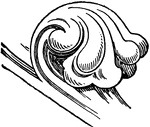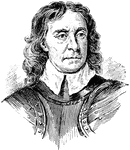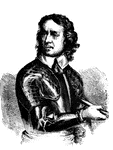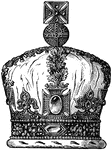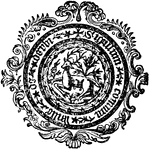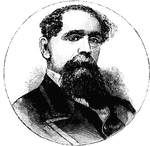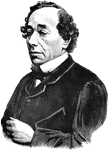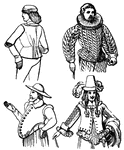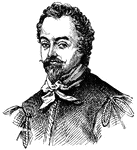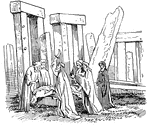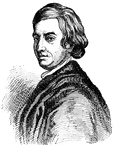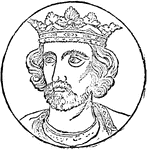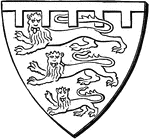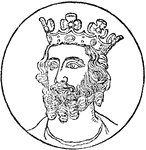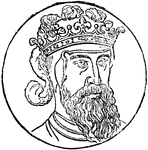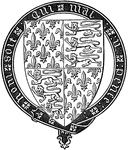
Coronation Chair in Westminster Abbey
"Beneath the seat is the celebrated Scottish Stone of Scone, which was carried away from Scotland by…

Album Cover
This album cover was designed in London, England. It is a small quarto (bookbinding technique), richly…
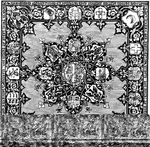
Table Cover
This table cover shows the royal arms of England in the center. It is used to go over a table for decorative…

Thomas Cranmer
Thomas Cranmer (2 July 1489 – 21 March 1556) was a leader of the English Reformation and Archbishop…

The Cromwell House at Stuntney
Stuntney is about a mile and a half outside the cathedral city of Ely. Oliver Cromwell lived here for…
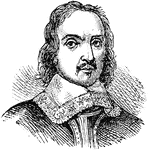
Oliver Cromwell
Oliver Cromwell (25 April 1599 Old Style– 3 September 1658 Old Style) was an English military…

The Last Crusade
"Richard I (looking down on the Holy City): 'My dream comes true.' A cartoon which appeared in Punch,…
Crystal Palace at Sydenham
"But perhaps the most effective and suitable employment of iron is shown in connection with glass, as…
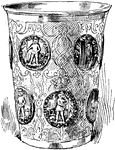
Medal Cup
An illustration of a "silver Medal-cup (The medals are all of the Duke of Brunswick-Wolfenbuttel.)"…
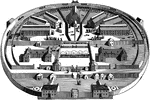
Dartmoor Prison
HM Prison Dartmoor is located in Princetown, high on Dartmoor in the English county of Devon. Its high…
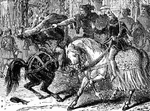
Death of Wat Tyler
Wat Tyler, while talking to the King, grew violent, forgot to whom he was speaking, and laid his hand…

Diadem
"DIADEM, a circle of gold with points rising from it, worn by ancient kings as the token of royalty.…

Benjamin Disraeli
(1804-1881) British Statesman and Prime Minister who wrote the novels Vivian Grey Coningsby and Sybil
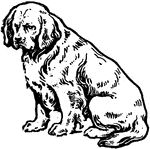
Clumber Spaniel
"The Clumber spaniel, so called from the breed having originated at Clumber, in Nottinghamshire, a seat…
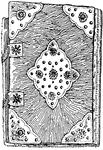
Domesday Book
The Domesday or Book of Winchester was a survey or census of England completed in 1086 for William the…
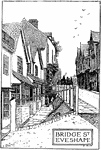
Pen Drawing
This is a pen drawing by artist Edmund New. It seems to illustrate people walking across a bridge in…
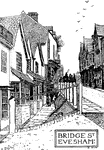
Pen Drawing
This is a pen drawing by artist Edmund New. It seems to illustrate people walking across a bridge in…

Druids
"The Druidical system was at the height of at the time of the Roman invasion uner Julius Caesar. Against…
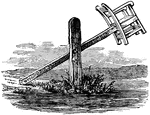
Ducking Stool
Used as a form of humiliating punishment for angry women, a ducking stool was "a stool or chair in which…

Early English Style (Salisbury Cathedral)
Early English Style, Detached shafts in Lady Chapel, Salisbury Catherdral
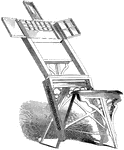
Easel
This easel was made in England for use of both oil and water color painting. It has attached compartments…
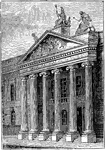
The Old East India House
East India House in Leadenhall Street in the City of London in England was the headquarters of the British…
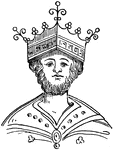
King Edgar
Edgar I (c. 943 – 975), known as Edgar the Peaceful or the Peaceable, was King of England from 959…

Edward I (Longshanks)
Edward I (17 June 1239 – 7 July 1307), popularly known as Longshanks, achieved historical fame…
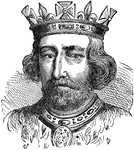
Edward II of England
Edward II, (April 25, 1284 – September 21, 1327) of Caernarfon, was King of England from 1307…
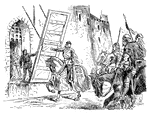
Edward II repulsed from Stirling castle by De Mowdray.
Edward II repulsed from Stirling castle by De Mowdray.

Edward III
Edward III was one of the most successful English kings of medieval times. His fifty-year reign began…
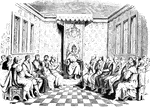
Edward VI
"Edward VI, and his Council. From a wood-cut on the title-page of 'Acts of Parliament," A.D. 1551."…

Edward VI. Writing His Journal
Edward VI became King of England and Ireland on January 28, 1547, at just nine years of age. Edward,…
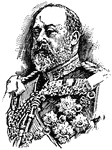
Edward VII
(1841-1910) King of the United Kingdom during 1901-1910. The eldest son of Queen Victoria
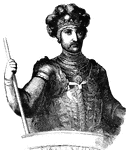
Edward the Black Prince
(1330-1376) Prince Edward never became king, for he was outlived by his father.



